Portaferry Road Newtownards Wastewater Pumping Station (2020)
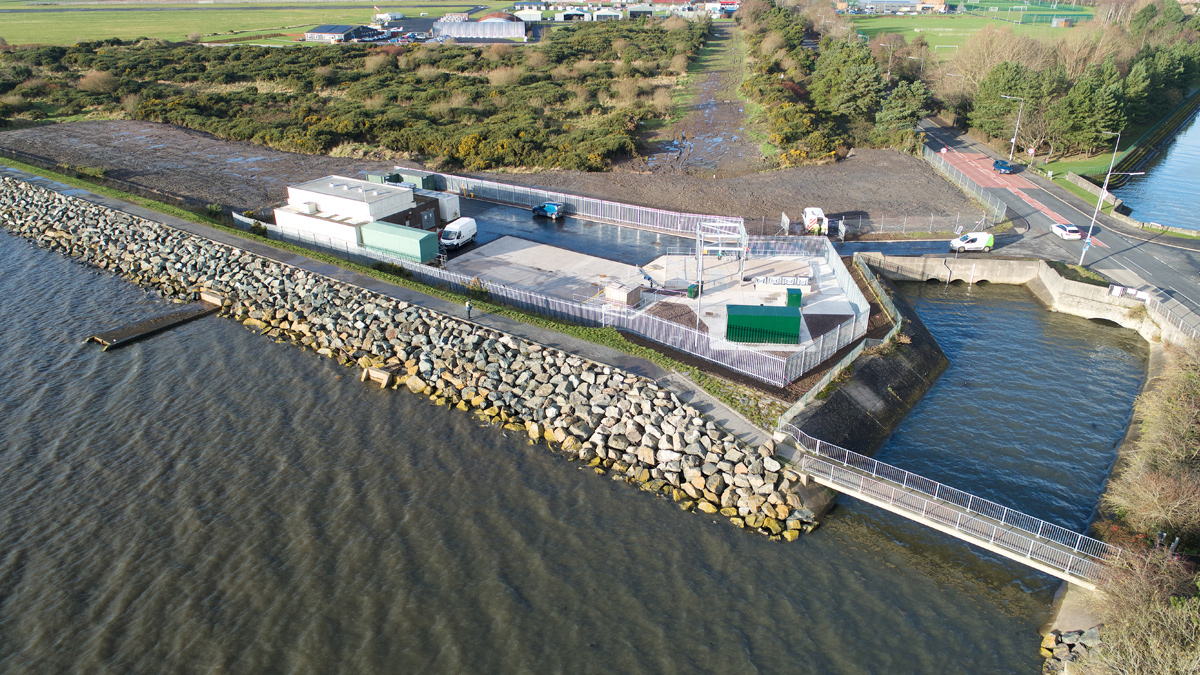
Completed Portaferry Road WwPS on shores of Strangford Lough Newtownards - Courtesy of NI Water
Located on the edge of Strangford Lough, on the Ards Peninsula, Portaferry Road WwPS serves the eastern catchment of Newtownards, forwarding approximately 25-35% of the wastewater from Newtownards town to Ballyrickard WwTW, located approximately 3km away. Altogether Ballyrickard WwTW receives untreated foul effluent from six major pumping stations located within the Comber and Newtownards catchments: South Street, Scrabo Road, Comber Road, Sunderland Park and Portaferry Road WwPS, all in Newtownards, and Upper Crescent WwPS in Comber. As part of the Northern Ireland Drainage Area Studies (NIDAS) programme carried out in 2010, the Ballyrickard Drainage Area Plan (DAP) ‘Needs and Options’ Report identified potential upgrades for the Newtownards catchment. Within that report, the DAP identified that Portaferry Road WwPS did not meet NI Environment Agency (NIEA) requirements for emergency storage volume and spill frequency and did not offer any screening for sewage overflows to Strangford Lough.
Background
The Portaferry Road WwPS site boundary encloses a foul pumping station, storm water pumping station, associated buildings and a standby generator. The site lies adjacent to the Ulster Flying Club, the A20 Portaferry Road (the main scenic coastal route along the Ards Peninsula) and borders the popular coastal walkway along Strangford Lough.
Constructed in 1972, Portaferry Road WwPS consists of a below ground inlet channel; an underground wet well, dry well with associated pipework; 2 No. (duty standby) pumps, a control building and an overflow to Strangford Lough.
Strangford Lough is a large sea lough or inlet in County Down, in the East of Northern Ireland. It is the largest inlet in the British Isles, covering 150km2. The lough is almost totally enclosed by the Ards Peninsula and is linked to the Irish Sea by a long narrow channel at its south eastern edge. Both an Area of Outstanding Natural Beauty and an Area of Special Scientific Interest, Strangford Lough is home to over 2,000 marine species, making it one of the most richly biodiverse regions in Europe.
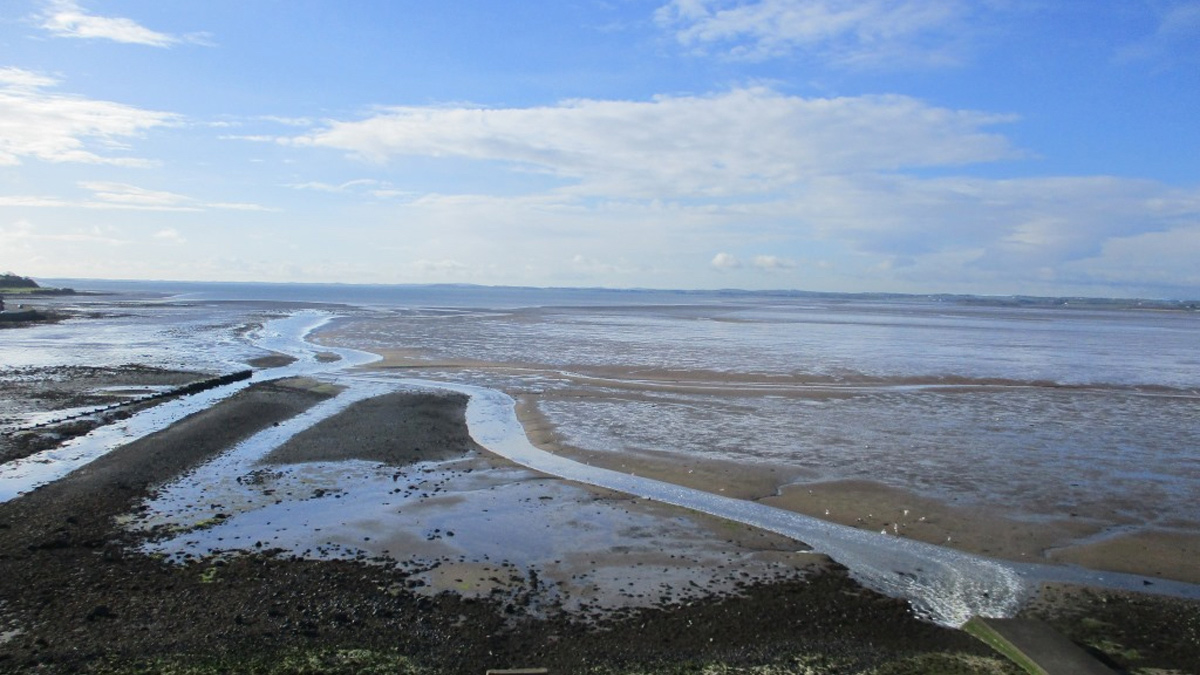
View across Strangford Lough from Portaferry Road WwPS – Courtesy of NI Water
Ballyrickard Drainage Area Plan (DAP)
The Ballyrickard DAP stated that there was a requirement for Portaferry Road WwPS to have a minimum of 2-hours flood protection storage facility, which, at that time, would entail having 558m3 storage provision on site. Following the Ballyrickard DAP findings and NI Water’s subsequent assessment of the existing WwPS carried out in 2012, a resulting statement of need was compiled:
- The existing WwPS is in poor condition and demands considerable maintenance.
- High Operational Expenditure (OPEX) – demanding considerable M&E and networks maintenance.
- Large costs incurred from de-gritting the wells due to the station being used as a discharge point for septic tank emptying and local tankering.
- The station does not have the requisite emergency storage volume.
- The pumps are antiquated and leaking.
- The inlet area is prone to flooding with debris/rags apparent on the mesh flooring.
- The overflow to Strangford Lough is unscreened and is too low which can result in tidal ingress to the foul wet well.
The storm pumping station located within the existing Portaferry Road WwPS site, which pumps storm/surface-water flows from a significant portion of Newtownards to Strangford Lough, had been refurbished in 2012 and was to remain undisturbed.
A section of the 500mm ductile iron pumping main, which transfers flows from Portaferry Road WwPS to Ballyrickard WwTW, had been replaced by a new 560mm HPPE pumping main in 2013 to coincide with a new road that was being laid – the A20 Newtownards Southern Distributor Road.
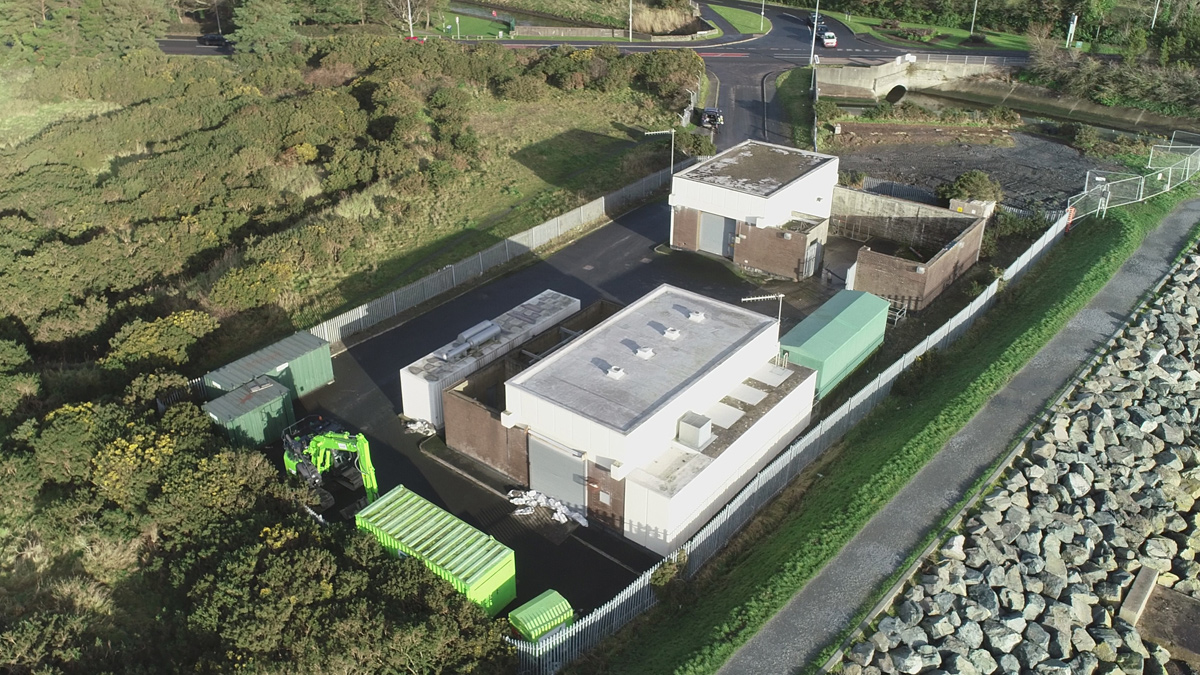
Existing Portaferry Road WwPS with area for new WwPS shown adjacent to floodgates – Courtesy of NI Water
Need for improvements
Portaferry Road WwPS: A population study of the Ballyrickard catchment was subsequently completed in December 2015. The original Ballyrickard DAP model was updated following this population study report and the resulting updated flow figures were used to review existing and future needs for Portaferry Road WwPS.
According to the updated Ballyrickard DAP and NIEA’s requirements in their response to the pre-application to discharge, Portaferry Road WwPS required a minimum of 2 hours of flood protection in the event of mechanical or power failure at the pumping station, which would entail having a 507m3 storage facility. This could not be provided under the existing pumping station arrangement, without a significant upgrade. This storage figure had decreased from the original DAP due to updated future population figures based on the population study report and the resulting revised flow figures which were used in the updated DAP model.
To implement the requirements of the 2016 Ballyrickard DAP would involve:
- Providing of 507m3 of emergency storage.
- Retrofitting a 6mm static screen to the existing overflow.
Capacity calculations indicated that the existing pumping station was undersized for emergency foul storage. Any future development within the catchment would further increase the likelihood of compliance failure.
Pumps and pumping main: The study to verify the existing and future populations, completed at the end of 2015, allowed a more up-to-date assessment of the existing catchment, which determined a contributory PE of approximately 8,200 being served by Portaferry Road WwPS. Based on the estimated corresponding flows, the pumps and pumping main were found to have sufficient capacity to meet the current supply demand. An assessment of the future catchment however, determined that a contributory PE of approximately 13,300 would need to be served by Portaferry Road WwPS, which would require a significant upgrade. It was recommended that the new pumping facility be designed to be capable of passing forward a design flow of 190 l/s. The existing site was passing forward less than both the design flow and the future Formula A.
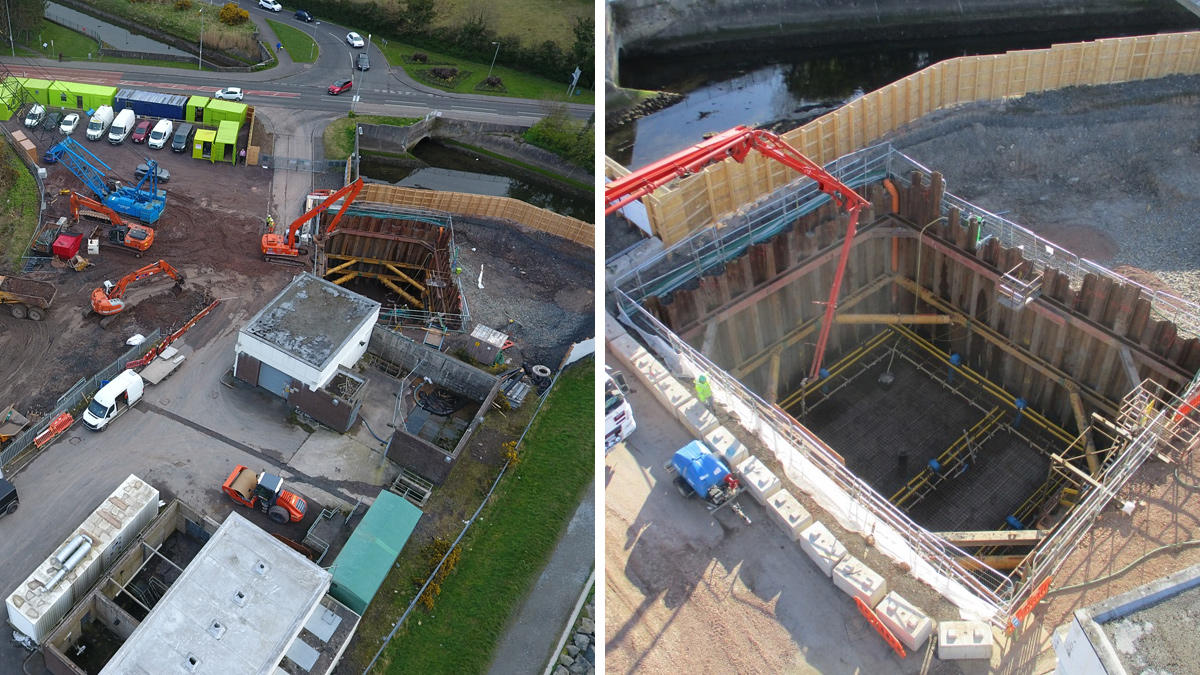
(left) Early construction works Portaferry Road WwPS and (right) excavation to depth of 10.5m and the start of the reinforced concrete pour – Courtesy of NI Wate
Project drivers
The primary drivers for the project were legislative in nature to ensure that the overflow discharge effluent and emergency storage volume were compliant with NIEA requirements. The Portaferry Road WwPS was a nominated PC15 (Price Control 15 period) unsatisfactory intermittent discharge (UID) within the Ballyrickard catchment. To remove the UID the NIEA pre-application agreed to a pass-forward-flow of 190 l/s and storage provision at the station of 507m3, with a 6mm screened overflow. These measures would reduce the spills from the station to a maximum of 10 spills per annum.
The secondary drivers were to provide a safer environment for operations; reduce operational and maintenance costs and improve the efficiency of the WwPS.
Preferred option
After considering various options in terms of economic, environmental and engineering criteria, a modern new WwPS on the existing site was deemed to offer the best solution to satisfy both legislative and operational requirements. The new WwPS would be designed to:
- Adequately convey future Newtownards flows to Ballyrickard WwTW through a new pumping main (replacement of certain sections of the existing main).
- Provide the necessary emergency storage.
- Eradicate existing operational, and health and safety concerns.
- Leave the coastal shoreline undisturbed by using the existing overflow headwall, with the addition of a new modern flap valve, and providing the additional storage without increasing the top water level.
- Remove tanker discharge facilities from the site.
- Demolish redundant concrete structures with the resulting material to be used as fill on the new site.
When complete, this option would provide a fully compliant, efficient, safe and aesthetically pleasing wastewater asset in an environmentally sensitive area.
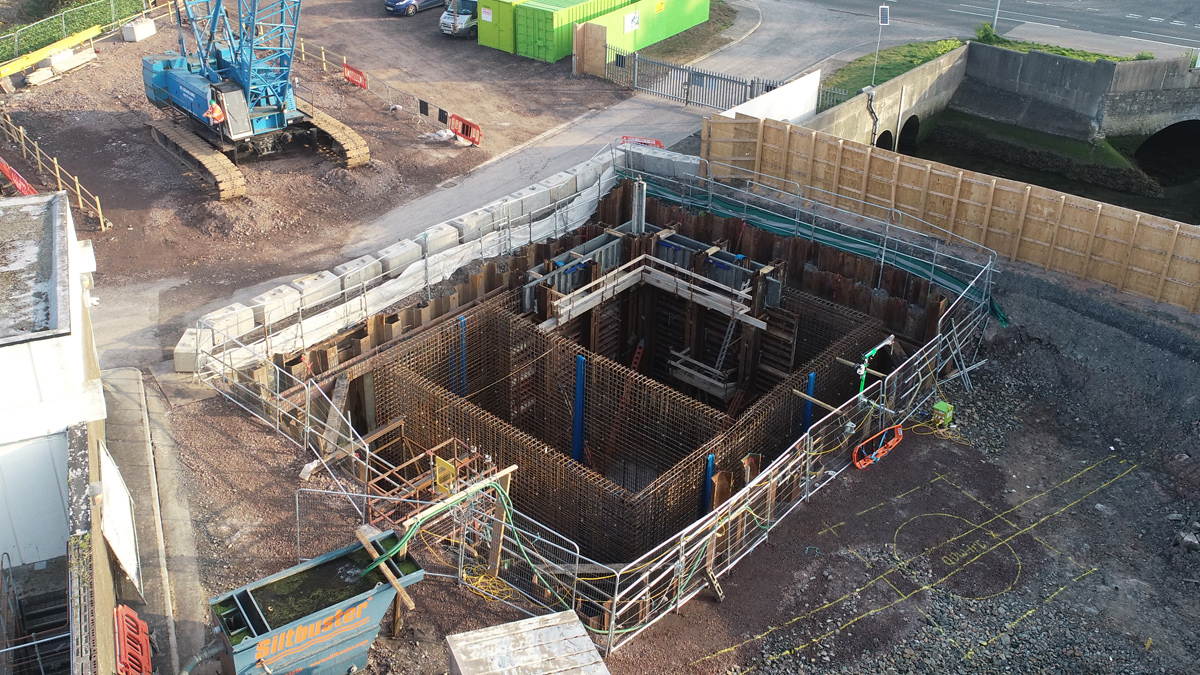
Portaferry Road WwPS – Rebar installed – Courtesy of NI Water
Tender process
AECOM were appointed Project Managers for the scheme through NI Water’s Professional Services framework (IF0180). Their role also included cost management, CDM advisory and site supervision activities. AECOM progressed the scheme from Project inception, feasibility, tender through to construction completion.
Through AECOM, the contract was tendered utilising NI Water’s IF019 Lot 3 Capital Delivery Framework, under NEC3 ECC – Option A Design and Build Contract. The project was uploaded to e-Tenders in July 2018 for competitive tender with GRAHAM Construction being appointed principal contractor and principal designer for the scheme in October 2018. Work commenced on site in November 2018 with site investigation works and was completed and handed over to NI Water in December 2019. The project represented an investment by NI Water of £1.9m.
Portaferry Road, Newtownards Wastewater Pumping Station supply chain – key participants
- Project managers: AECOM
- Principal designer & contractor: GRAHAM Construction
- Civil design: McAdam Design
- MEICA designer & contractor: Enisca Ltd
- Temporary works design: Mark Cassidy Geotechnical
- Sheet Piling: Ward Piling
- Formwork contractor: Ideal Formwork
- Civils contractor: Mills Contracts
What the project entailed
The contract was to design and construct a replacement WwPS within the boundary of the existing Portaferry Road WwPS providing total storage of 507m3, whilst maintaining operation of the old station. The station included the construction of a wastewater pumping station incorporating a wet well, valve chamber with flow meter, emergency storage tank with screened overflow and all associated pipework and pumping equipment. The works also included the provision of a new motor control panel within a new kiosk and the provision of wash water air break and booster set.
GRAHAM Construction incorporated a station design that allowed for a precast segmental shaft solution. Due to the substantial depth of the excavation, the close proximity of Strangford Lough and therefore the high risk of uncontrollable groundwater, the project team installed an in situ pumping station incorporating a sheet piled cofferdam to control the groundwater and provide certainty of safety during the works.
The construction of a new foul gravity inlet arrangement and the construction of a new section of emergency overflow pipework to connect to the existing emergency overflow line, which discharges into the Strangford Lough, were also completed.
Optimisation of the new WwPS: A study was commissioned to assist in the optimisation of the hydraulic performance of the new pumping station, which was designed to pump 190 l/s through a 560mm diameter pumping main over a distance of approximately 2700m. A mathematical model of the system was developed which included a simulation of the pump operation and uncontrolled pump shutdown. The hydraulic model was used to confirm the pump head requirement, the required pumping main pressure rating, the location and type of most suitable air valves and the depth of the pumping main to ensure correct air valve operation (this was particularly important given the flat topography along the route of the pumping main). The pumps installed were 75kW pumps with inverter drives to limit surge during the start/stop operation and to limit the power requirements during pump start.
This optimisation of the new WwPS facilitated the use of the existing site generator to power both the new WwPS and the existing storm pumping station in the event of power failure. This had not been possible with the old WwPS due to the power demand of the existing pumps.
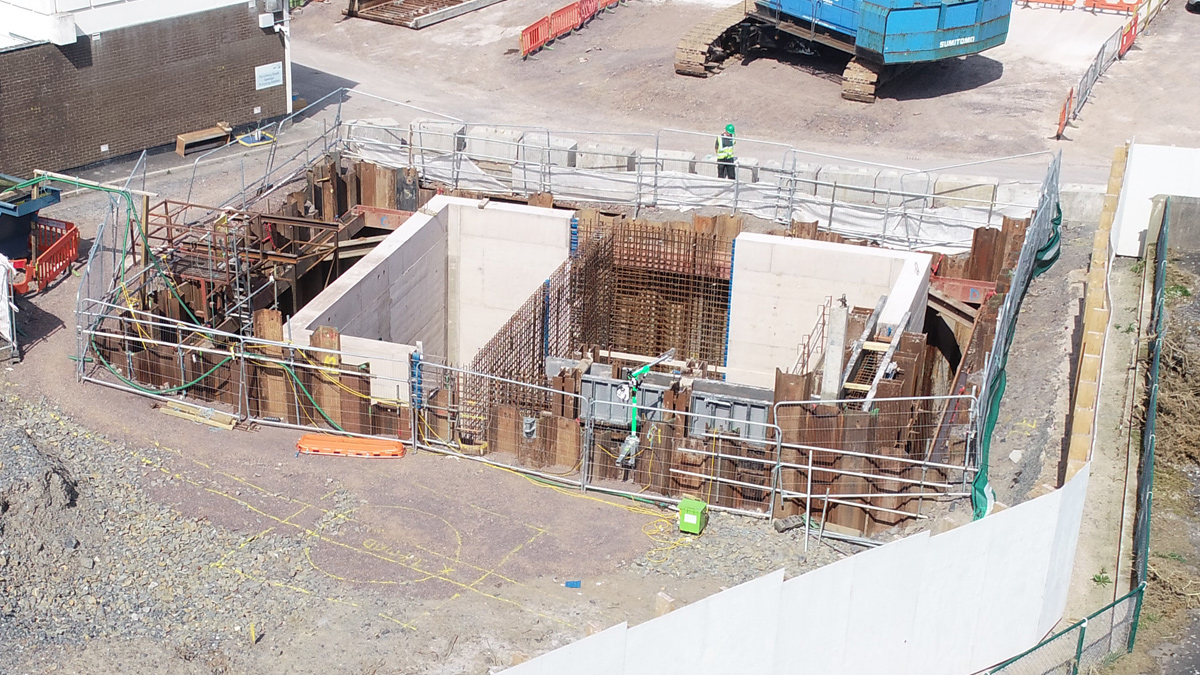
Reinforced concrete construction of internal walls – Courtesy of NI Water
Pumping main: The majority of the existing pumping main, which links Portaferry Road WwPS to Ballyrickard WwTW, is ductile iron dating back to the construction of the pumping station in 1972. Part of the pumping main runs through the adjacent airfield making operational access difficult. The pipeline is in poor condition with the most recent failure at the end of 2018.
To augment the improvements at the Portaferry Road WwPS, it was deemed that the remaining sections of the old ductile iron pipe (approximately 1390m) should also be replaced with new 560mm HPPE. The replacement would include the installation of air valves, scour valves and hatch boxes.
Pipelaying challenges and efforts to minimise impact: To eliminate the operational difficulties with access through the airfield, the pumping main was installed in the verge adjacent to the A20 Portaferry Road. Although logistically challenging, given that the A20 is one of the busiest roads in Newtownards, this was deemed to be the best solution in the long term. Approximately 90% of the pumping main could be laid offline, which reduced the total number of road closures required to install the pumping main along the first phase of the route.
The remaining section of pumping main planned for replacement was routed through a large housing development (West Winds Estate) on the outskirts of Newtownards. As can be seen from the maps below, the line of the existing pumping main went through an access road in front of a number of houses. To replace this section in the same area would result in major disruption for local residents and would affect their parking facilities. Working in collaboration with the residents, NI Water and GRAHAM Construction re-routed the pipeline away from the residential properties to the edge of the housing estate.
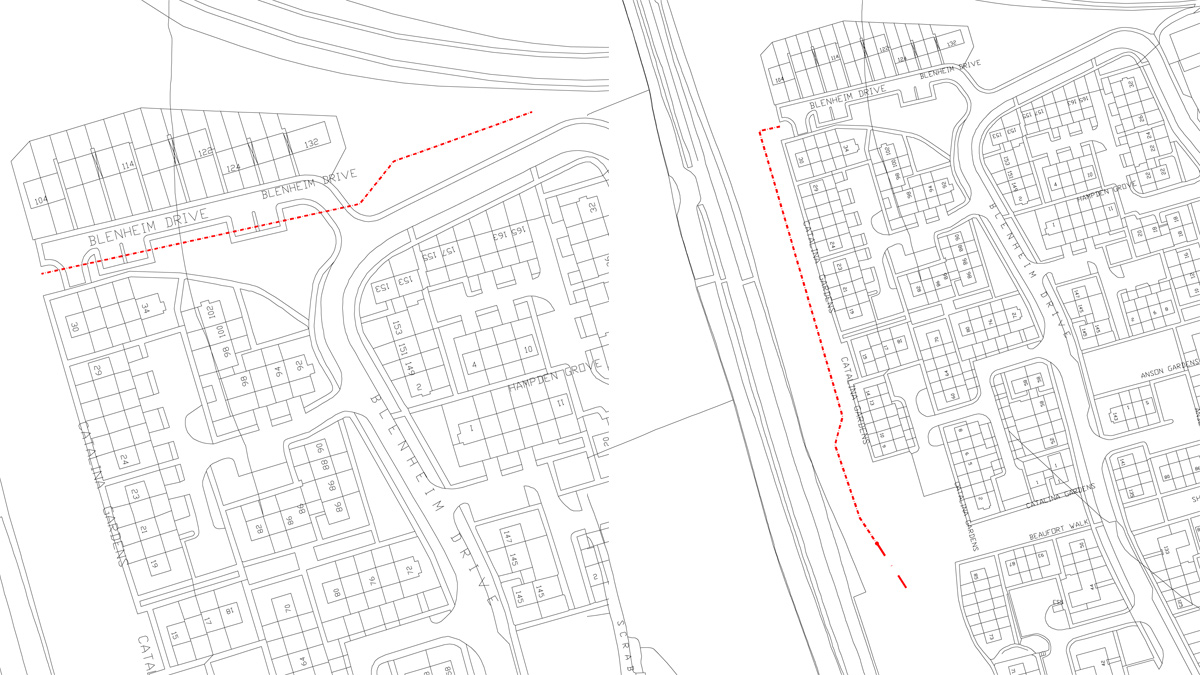
Maps showing line of existing pumping main – Courtesy of NI Water
As the replacement of the old ductile main affected two distinct areas, both sections of the new pumping main could be undertaken in tandem to meet the demands of the programme. Condition surveys and ecological assessments were undertaken before pipelaying work got underway in the West Winds Estate in May 2019. 580m of pipe was laid by traditional open-dig methods before the land was reinstated and landscaped in November 2019.
The laying of the pumping main along the A20 Portaferry Road required extensive planning and communications with a range of stakeholders including the NI roads authority, the local council (the route was adjacent to council-owned playing fields and leisure centre), shops and businesses, the flying club and nearby residents.
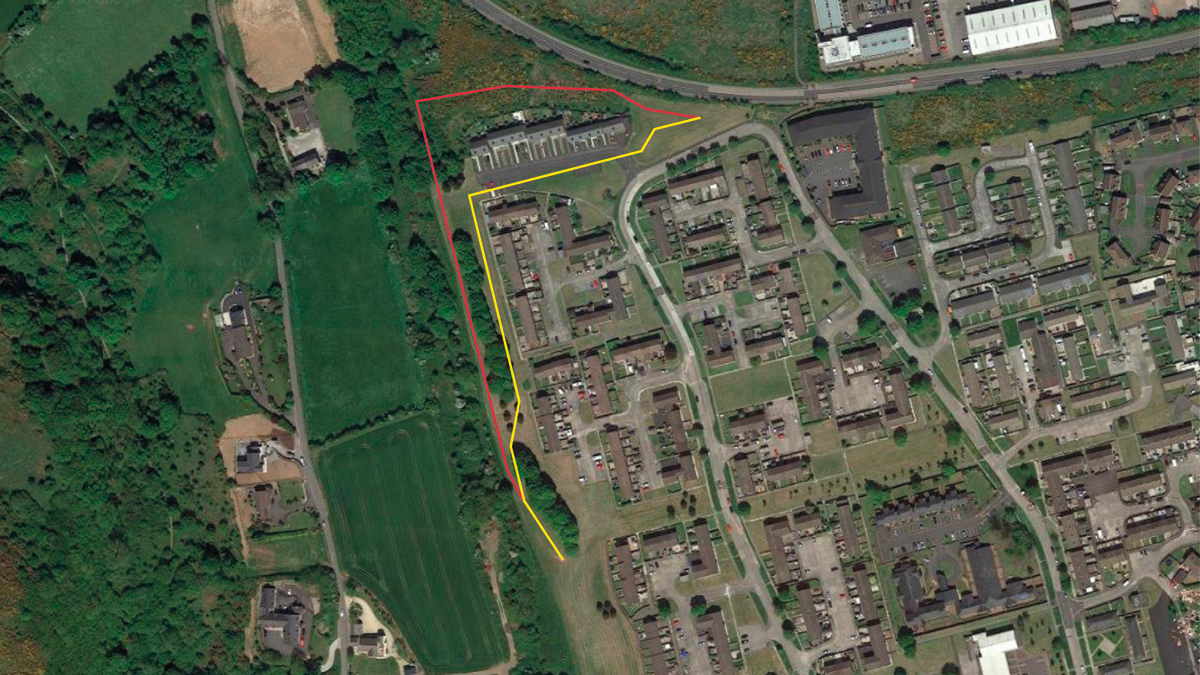
Aerial route showing existing route (yellow) and new route (red) of pumping main in West Winds to minimise impact – Courtesy of NI Water
Commissioning of the new pumping main: Perhaps one of the most significant challenges in this 12-month contract was the commissioning of the new pumping main, which required a temporary shutdown of Portaferry Road WwPS to make the connections to the retained sections of pumping main. This critical activity required meticulous planning and detailed coordination between the contract team and NI Water.
The work was programmed for forecasted dry days to ensure flows were controlled during the operation. Regular commissioning meetings were held with NI Water and the contract team in advance of the proposed works, to simulate the proposed drain down, connections and recommissioning of the pumping station and to discuss in detail the proposed works, programme and specific requirements in a systematic approach to confirm with relevant stakeholders that all eventualities had been considered before the works were confirmed.
Two connections were required; one in private land at Castlebawn Road (adjacent to the A20 Portaferry Road) and the second within West Winds Estate. Connection points were uncovered and prepared in advance to ensure all fittings were available to minimise the duration of shutdown.
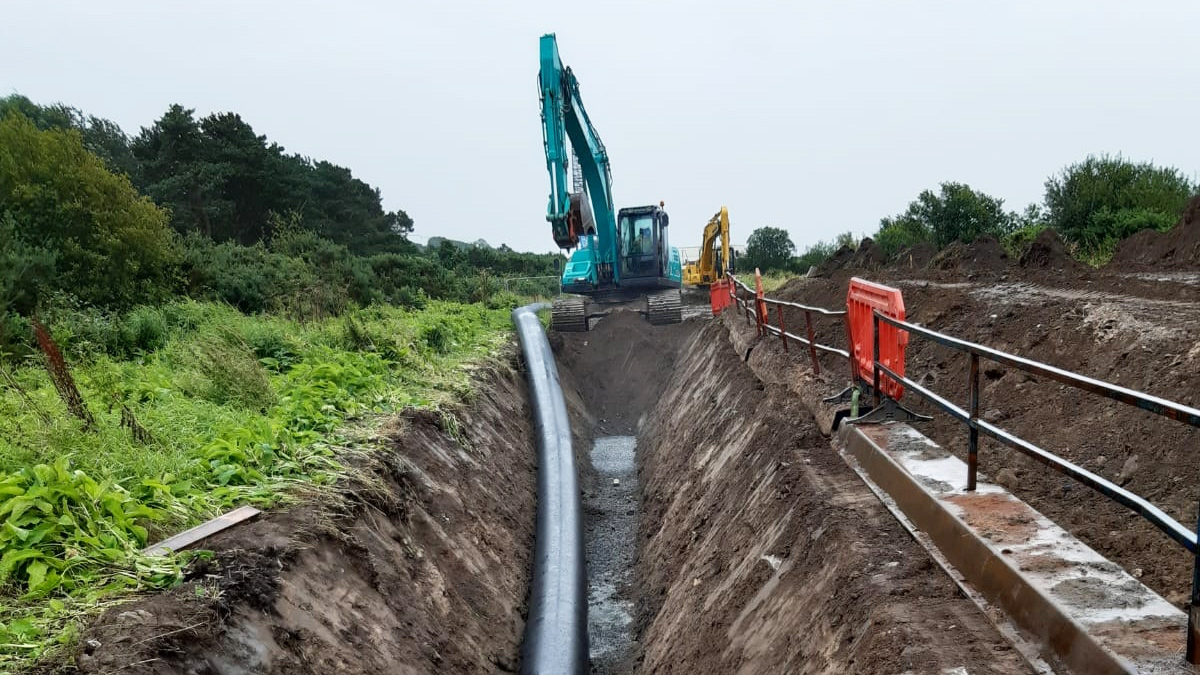
Pipelaying in West Winds – Courtesy of NI Water
The Portaferry Road WwPS was taken out of service on 11 October at 22.00. The 500mm ductile iron diameter pumping main was drained back to the existing pumping station wet well and temporary pumps were used to transfer flow between the old and the new pumping stations, to maximise the on-site storage (the new WwPS providing an additional on-site storage of 507m3). Normal incoming flow to the site was diverted to the new WwPS via operation of penstocks on the new inlet chamber. Tankers were filled from both old and new pumping stations simultaneously during the drain down process. Tankers were also deployed to the scour location and at the two connection points at Castlebawn Road and the West Winds Estate. The drain down of the pumping main took approximately 10 hours.
Following the pumping main drain down the two new connections were made adjacent to Castlebawn Road and in the West Winds Estate. The connections were made in a 12-hour period and were programmed to take place during daytime hours given the close proximity to domestic properties.
Tankering was in operation for the duration of the works with the primary tanker discharge location at South Street WwPS supplemented by Scrabo Road WwPS. The tanker discharge point at South Street proved most effective as agreement was reached with a landowner prior to the works to open up a proposed commercial development site which greatly facilitated the manoeuvrability and rotation of tankers during the operation. Additional discharge locations were agreed at Comber Road WwPS (network) and Sunderland Park WwPS but these were not used.
On completion of the connections the new Portaferry Road WwPS was brought into service at approx. 23.30 on the 12 October, following priming of the pumping main with special attention paid to the operation of the newly installed air valves along the route.
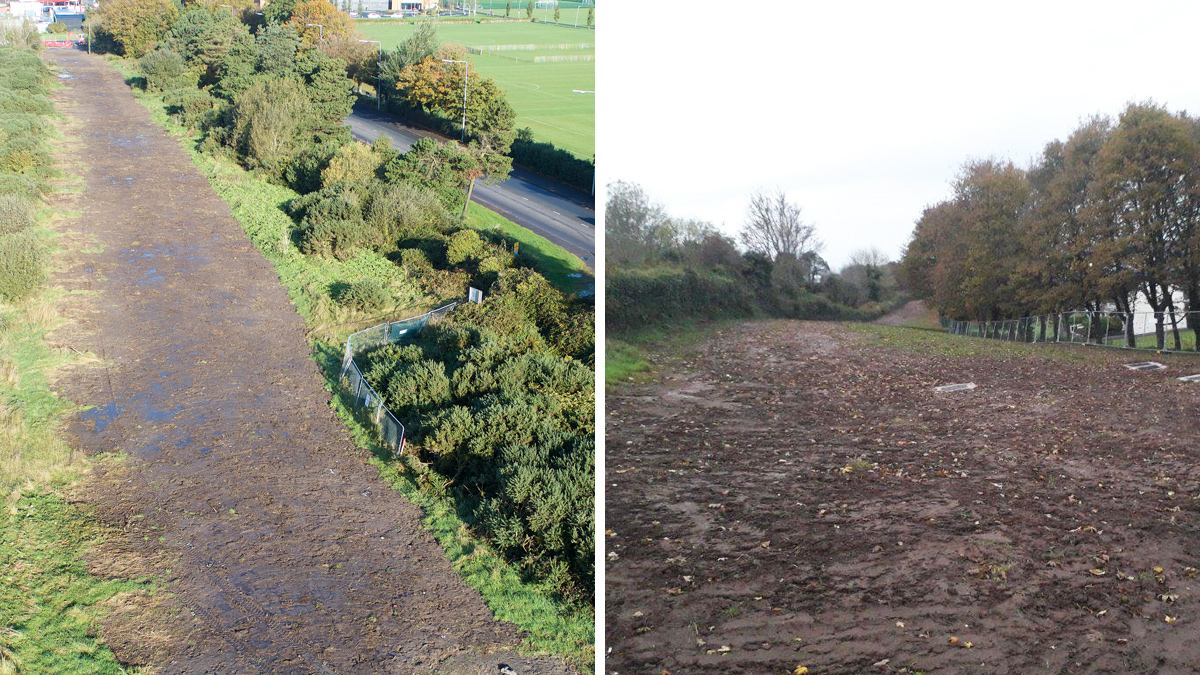
(left) Reinstatement of pumping main laid offline adjacent to A20 Portaferry Road, and (right) reinstatement in West Winds Estate – Courtesy of NI Water
Environmental improvements
Delivering environmental benefits was a major part of this project – not only through improved water quality discharge to Strangford Lough, but through more efficient processes implemented in the design of the new pumping station. Throughout the contract, NI Water, AECOM and GRAHAM Construction looked to identify areas where a positive environmental impact could be achieved. Examples of this are:
- Reusing all the material from the old WwPS as fill for landscaping around the new station.
- Reduction of odour originating from the site located in close proximity of a popular coastal path. The original WwPS had an open mesh type flooring directly above the wet well, whereas the new WwPS has a concrete roof slab above the tank, sealed covers and ventilation fitted with carbon filters.
- Overall aesthetic improvements on the site achieved by replacing the aged asset with a modern pumping station.
- Reduction of risk of contamination to adjacent ground and groundwater. The old pumping station structure was nearing the end of its service life and the risk of structural damage causing sewage leaks into surrounding ground was therefore increasing. The new asset mitigates this risk and significantly extends the service life of the site.
- A section of the existing inlet sewer was repaired by using trenchless method (CIPP lining), which removed groundwater infiltration and reduced the risk of ground and groundwater contamination. Reduced volume of flow in the pipeline also lowers energy consumption and has therefore positive impact on the environment.
Given the location of the WwPS works, laying adjacent to Strangford Lough, the site compound was set up taking account of ecological and environmental factors. Following recommendations provided in a Habitats Regulations Assessment, the compound hoarding which spanned part of the shoreline was painted grey – as opposed to GRAHAM Construction corporate green – to minimise the impact to wildlife.
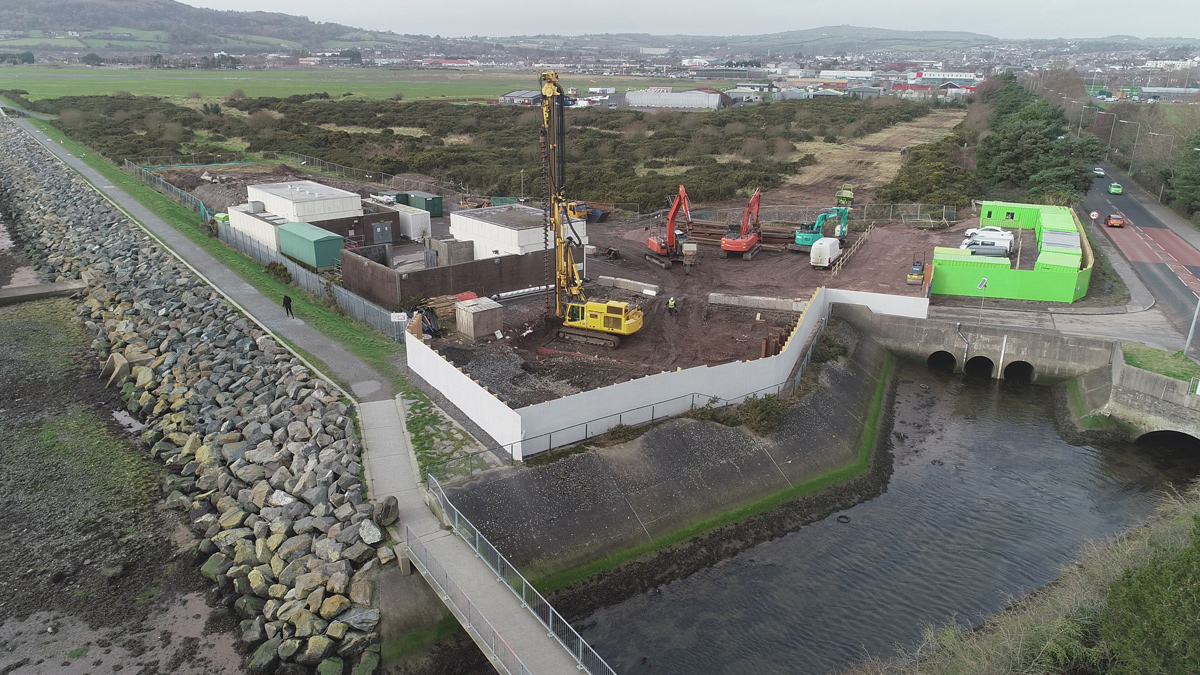
Photo showing considerate painting of hoarding around location for new WwPS as opposed to GRAHAM Construction’s corporate green colour – Courtesy of NI Water
Community engagement
Ahead of construction commencing on site and throughout the work a number of public relations activities were employed to inform the myriad stakeholders about the project and in particular the pipelaying activities. These included: regular briefings to local elected representatives; one-to-one meetings with stakeholders; letter drops; school visits; press releases and social media announcements.
Information banners were erected around the hoarding and progress updates issued to councillors, council staff and local media. In addition to the successful community beach clean, a ‘cake and coffee’ morning was held on site in aid of Marie Curie Cancer Care.
On a wider environmental enhancement level, the area of land adjacent to the WwPS that GRAHAM Construction rented for their site compound had been heavily congested with fly-tipped material including old rubber tyres. GRAHAM Construction cleared the land and disposed of the items in the appropriate manner, leaving a much more aesthetically pleasing area. Continuing their efforts to help make a difference to the local environment, during the contract the NI Water project team joined forces with Keep NI Beautiful and local residents to carry out a beach clean along the shores of Strangford Lough. This was a very successful event which earned the praise from the local council chair.
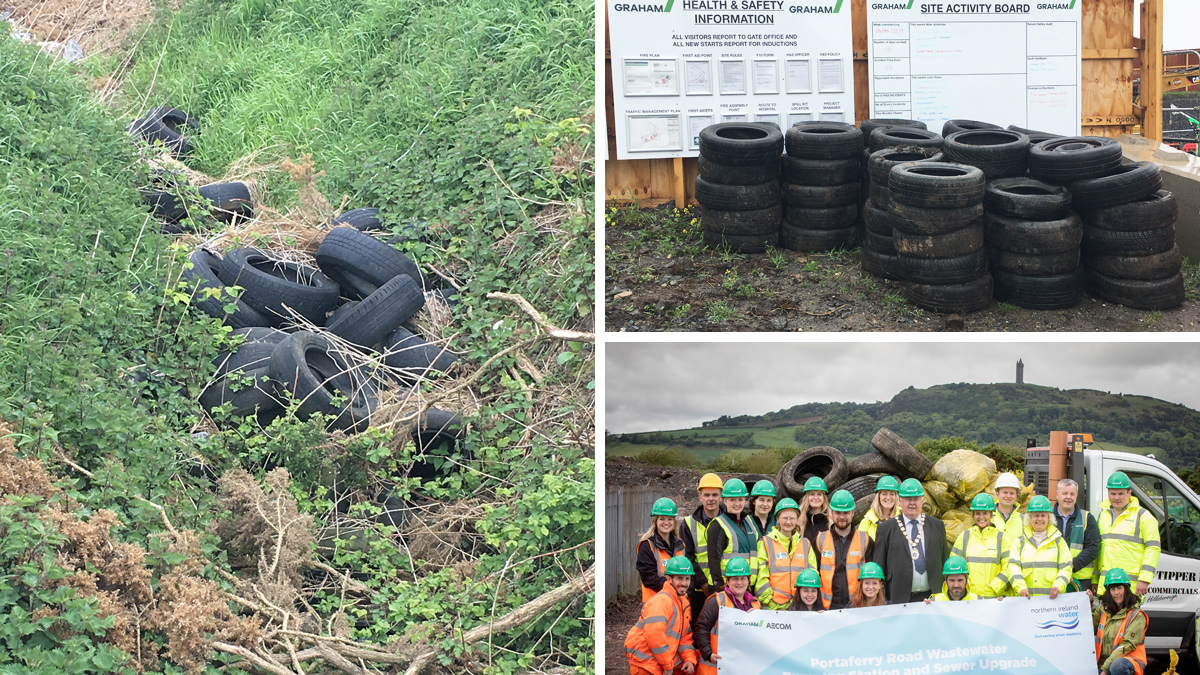
(Left) Tyres found dumped on adjacent lands were (top right) collected and disposed of safely. (Bottom right) There was a great turn out for beach clean from project staff, stakeholders and local volunteers despite very wet weather – Courtesy of NI Water
Project success and completion
The construction of the new Portaferry Road WwPS and the laying of a new strategic pumping main was completed on time within the programmed 12 months. The £1.9m NI Water investment has delivered a robust and efficient pumping station which has significantly improved the reliability of the sewerage network in this part of Newtownards. The introduction of emergency storage and overflow screening is a fundamental part of the design which is resulting in environmental improvements through reduced spills and enhanced water quality discharge to Strangford Lough.





